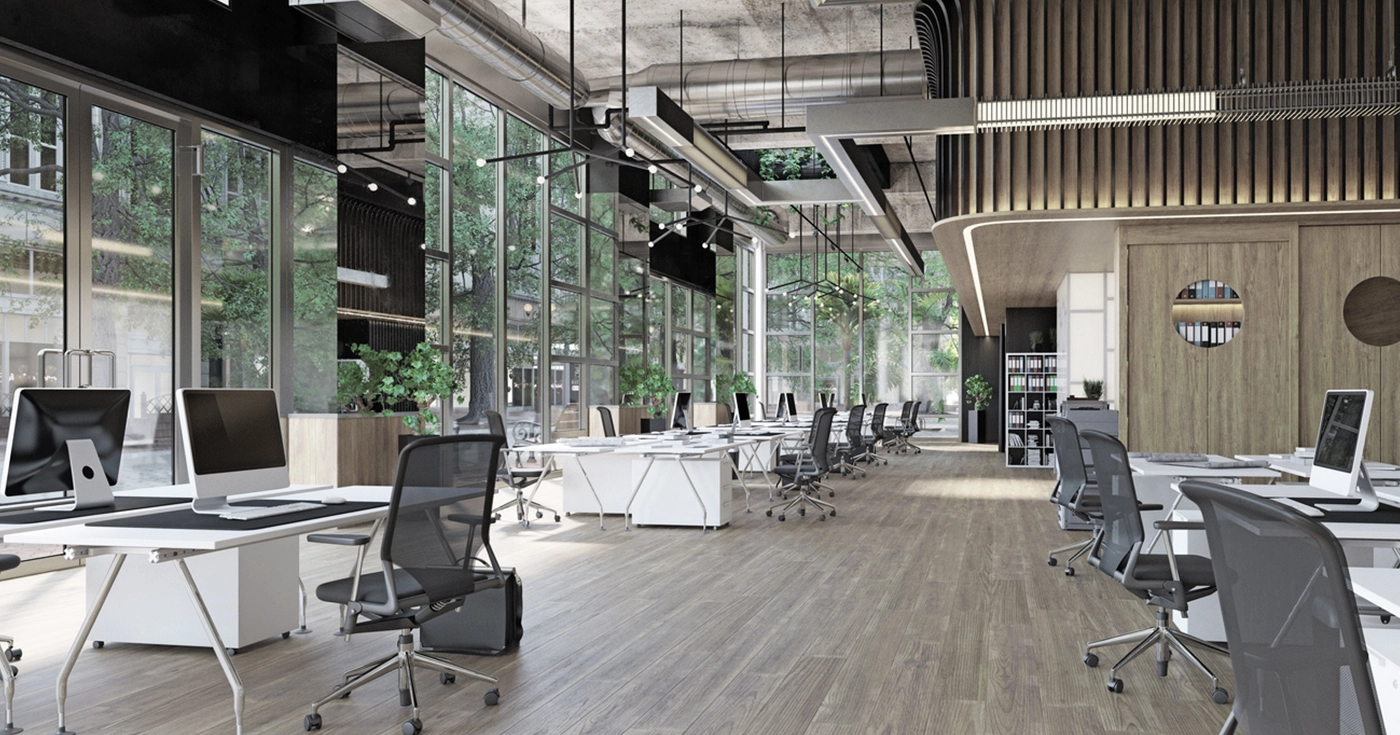
Flexible offices or spaces: Málaga, Seville, and Madrid lead in occupancy.
In a constantly evolving work world, well-being and flexibility are aspects that are becoming increasingly important for talent retention. And this is something that companies know well. Therefore, many companies have opted to reformulate their workspaces towards flexible or agile space models, which offer employees different places and ways to work.
With an average of 2.4 days of telecommuting per week in Spain, more than 50% of spaces dedicated to offices and 40% of traditional meeting rooms were reduced in the last year. These are figures revealed by the Office Occupancy Report of 2023, published by CBRE, which also indicates a trend towards new environments emerging from telecommuting.
Flexible work undoubtedly has great advantages both for companies by reducing costs and optimizing available spaces, and for the teams that make them up. Regardless of the size or number of employees, it is a formula that is increasingly valued, as evidenced by the rise in the hiring of flexible spaces. As an example, IWG, the world’s largest manager of flexible offices, has just announced that it will open seven new spaces in Madrid in 2024. The firm already has more than 60 centers spread throughout the geography, from cities like Barcelona, Madrid, Zaragoza, Logroño, Pamplona, and Valencia, among others.
The flex sector is consolidating in Spain
According to CBRE data, the hiring of flexible positions has increased throughout Spain in 2023, with special dynamism in the last quarter. This reflects “the interest that the sector continues to generate and shows that there is demand for space that is not being met at the national level,” as stated by Salvador Aguilar, CBRE’s Flex Office manager in Spain.
The flex sector thus consolidates its position in Spain with significant occupancy figures in major cities, but with special attention to its growth in other geographical areas, especially in cities like Málaga, Seville, and Valencia.
The regional market shows an average occupancy rate of 87% (5% higher than the previous quarter). Cities with high occupancy rates stand out, such as Málaga (93%) and Seville (92%). Specifically, CBRE places Málaga as one of the main expansion hubs for the largest operators in the market. In total, the city has 854 flexible workstations and a stock of 8,536 m2. It is currently at peak occupancy and has space demands to be met due to the lack of availability in the city.
Seville climbs to second place in terms of occupancy volume (92%) and has a stock of 10,500 m2, which translates into 1,050 flexible workstations. According to CBRE, the market is limited by a shortage of offerings that do not meet the specific requirements that operators demand: a minimum of 1,000 m2, natural light, and a landmark location. Faced with the difficulty of available downtown spaces, the La Cartuja area, a few kilometers from the city center, is emerging as a good alternative for locating these spaces.
Madrid, on the other hand, ranks as the third city in Spain with the highest occupancy at 86% and 2,945 workstations transacted in the fourth quarter of the year. The capital has 245,000 m2 dedicated to flexible offices, representing 1.9% of the total office stock. High occupancy has triggered the expansion plans of many operators, and new openings are expected in the coming months.
In cities like Valencia, occupancy reaches 83%, with 1,310 flexible workstations and a stock of 13,100 m2. The increase in occupancy in Alicante is also noteworthy, up to 80%.
Barcelona reaches 79.3% occupancy, reflecting an increase from 74% in the first half. The Catalan city brings together 223,000 m2 dedicated to flexible spaces, accounting for 3.5% of the total office space.
Growth in profitability of flexible offices globally
On the other hand, the annual report by Savills and Workthere on the evolution of flexible offices globally indicates that more than 33% of flexible spaces worldwide recorded margins higher than 26% in 2023.
According to this analysis, the average size of a flexible office center worldwide was 2,814 m2 and the average number of workstations increased to 265 compared to 255 recorded in 2022. In addition, major capitals (62%) are the favorite locations for installing flexible workspaces globally, followed by provincial capitals (18%), other provincial municipalities (10%), and emerging countries (10%).
Urbanitae and its commitment to the Flex sector
Urbanitae, for its part, has also focused on flexible spaces. Hand in hand with Psquared – a pioneering company in the acquisition of real estate assets to be converted into workspaces – we launched The Haus project in 2021. An operation that consisted of acquiring an office space to adapt and refurbish it. From being an old print shop, in the heart of the Eixample district, in Barcelona, it became a contemporary-style studio house with avant-garde design. The collaboration between Urbanitae and Psquared is another example of the crowdfunding boom in a sector, such as real estate, that is constantly evolving and remains attentive to new market trends.

